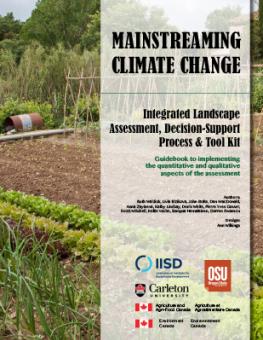
Mainstreaming Climate Change Integrated Landscape Assessment, Decision-Support Process & Tool Kit: Guidebook to Implementing the Quantitative and Qualitative Aspects of the Assessment
This guidebook provides an overview and application of scenario approaches as a method of conducting complex regional and place-based assessments and providing information to support planners developing longer-term adaptation plans.
This guidebook provides an overview and application of scenario approaches as a method of conducting complex regional and place-based assessments and providing information to support planners developing longer-term adaptation plans.
An important aspect of the approach, however, is that it considers future change in the context of whole regional systems. This guidebook describes how to characterize changes while measuring, evaluating, and mapping climate change impacts in the context of quantitative data on the agricultural sector in light of developed qualitative scenarios.
Participating experts
You might also be interested in
Mainstreaming Climate Change Integrated Landscape Assessment, Decision-Support Process & Tool Kit: Lessons from Southeastern Ontario
What Is the NAP Assessment at COP 29, and Why Does It Matter?
At the 29th UN Climate Change Conference (COP 29) in Baku, countries will assess their progress in formulating and implementing their National Adaptation Plans. IISD’s adaptation experts Orville Grey and Jeffrey Qi explain what that means, and what’s at stake.
IISD Annual Report 2023–2024
While IISD's reputation as a convenor, a trusted thought leader, and a go-to source on key issues within the sustainable development field is stronger than ever, the work happening outside the spotlight is just as valuable.
How to Make Nature-Based Solutions for Adaptation Work for Everyone
Effective nature-based solutions (NbS) for adaptation start with integrated climate risk assessments. These take-aways will help practitioners plan for inclusive and sustainable NbS.